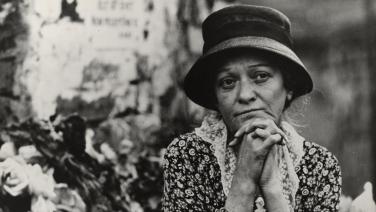

Sziget a szárazföldön (The Lady from Constantinople), Judit Elek, Hungría, 1969, 79’
An old woman, living on memories among the cluttered objects of her past, decides moving into a smaller apartment. Once relocated, she retreats back into isolation.
Screening related to the exhibition in Kultxa Kultur Espazioa organized by the research project Z70.
In October 2018, a group of students from the first year of study at the Elías Querejeta Zine Eskola (EQZE), accompanied by the researcher Pablo La Parra, crossed the threshold of the Martutene depot, where the San Sebastian Festival had housed its complete archive since its birth in 1953. This was the genesis of the research project Zinemaldia 70: all possible stories, jointly organised by the Festival itself and the EQZE.
Three years later, and having by now completed two public programmes, at the Zinemaldia 70 project work has been underway on a photography exhibition consisting of 30 images dating back more than 50 years and which can be seen at the Kutxa Kultur Espazioa from February 24.
Based on material from the Festival’s photography archives and the Kutxateka collection, the exhibition First steps. Other approaches to the visual history of the San Sebastian Festival (1953-1970) endeavours to rethink and update the Festival’s history from the fringes, from the periphery that was never observed, far removed from the usual imagery of glamour and red carpets. One of the main lines composing the content of the exhibition aims to provide a visual reply to a question as simple as “who were the first filmmakers selected by Donostia to compete for the Golden Shell?” The answer lies in three names never to date included in the Festival’s traditional accounts: Yuliya Solntseva, Tatiana Lióznova and Judit Elek, three female moviemakers from countries in the Soviet Bloc.
The first, Solntseva, visited the San Sebastian Festival in 1964 with Zacharovannaya desna (The Enchanted Desna). Lióznova did the same in 1966 with Rano utrom (At Early Morning). And the third, Judit Elek, presented at the 1969 edition her feature film Sziget a szárazföldön (The Lady from Constantinople), which we recover in this showing.
The Lady from Constantinople, conceptually soaked in the aesthetics of “cinéma-vérité”, which also influenced a large part of the filmography by Márta Mészáros, portrays a lonely old woman (Manyi Kiss) obliged to leave a flat she can’t afford.
Elek’s piece was made at a particularly effervescent time in Hungarian moviemaking, monopolised until then by the names of men like István Szabó, Miklós Jancsó, István Gaál and Péter Bacsó. Elek’s film, together with the emergence of other female moviemakers such as Márta Mészáros, Judit Ember and Livia Gyarmathy therefore represents an opening in favour of the great variety of voices which also dialogue with one of the most important vanishing lines drawn by the photography exhibition First steps: shedding light on the women directors who have been ignored in the dominant histories of film.
Screening related to the exhibition in Kultxa Kultur Espazioa organized by the research project Z70.
